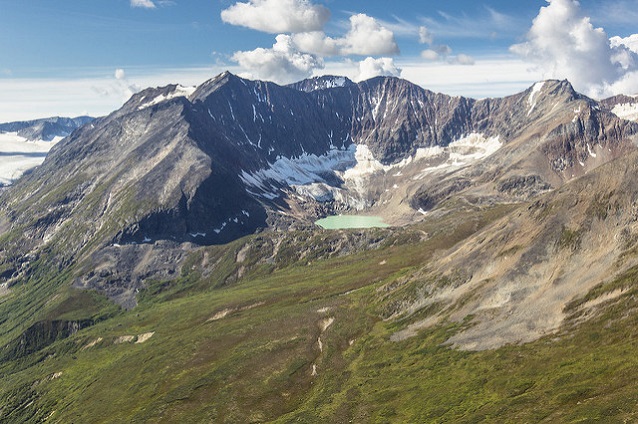
NPS Photo
Cirques are bowl-shaped, amphitheater-like depressions that glaciers carve into mountains and valley sidewalls at high elevations.
Often, the glaciers flow up and over the lip of the cirque as gravity drives them downslope. Lakes (called tarns) often occupy these depressions once the glaciers retreat.
How can glaciers flow uphill?
Glacier ice always flows downslope, but the slope that dictates ice flow direction is not that of the rock or sediment beneath the glacier. Rather, ice flow direction is determined by the glacier surface: a glacier will always flow in the direction the ice is sloping. This means a glacier can flow up hills beneath the ice as long as the ice surface is still sloping downward. Because of this, glaciers are able to flow out of bowl-like cirques and overdeepenings in the landscape. Learn more about glacier motion here.
To learn more about glaciers, glacier features, and glacial landforms, see the Glaciers & Glacial Landforms Page.
Part of a series of articles titled Glacier Landforms.
Last updated: February 9, 2018
